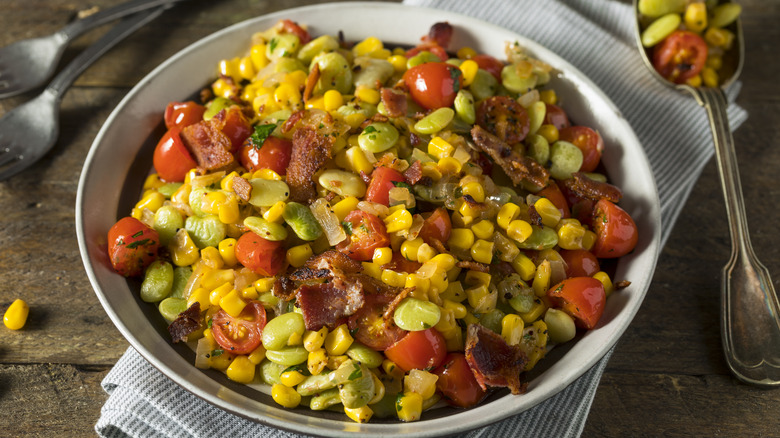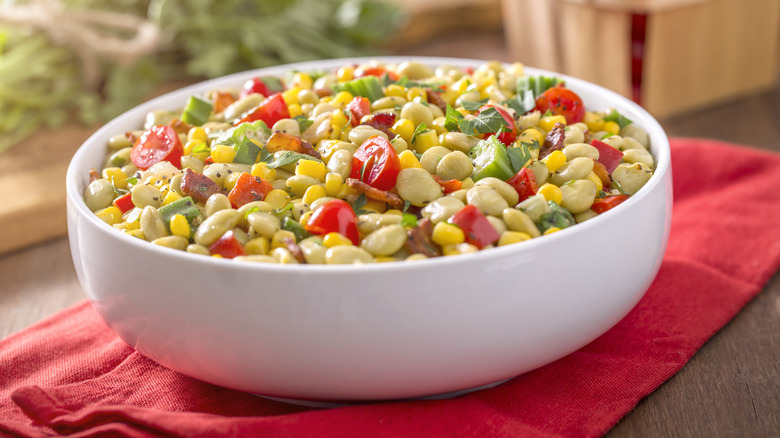How Succotash Got Its Iconic Name
Succotash, which was first documented between 1745 and 1755, has linguistic roots in the Algonquian languages spoken by Indigenous peoples of Southern New England. From the Narragansett word "msíckquatash," meaning "boiled whole kernels of corn," the dish originally combined corn with lima beans, a crop that was first cultivated in Central and South America several thousand years ago. By the 1st century A.D., these beans were grown alongside corn and squash in a system called "the Three Sisters." The corn provided support for the beans, the squash suppressed weeds, and the beans enriched the soil — an ingenious method that made its way to North America along with the beans.
By 1793, settlers had Anglicized the term to "succotash" and used it to describe a dish made from boiled corn and beans. This simple, nourishing meal was valued for its affordability and how its ingredients were available year-round. This hearty dish gained popularity throughout the United States, especially during tough economic times such as the Great Depression and World War II. Over time, succotash recipes developed various regional variations as people adapted the dish to include local ingredients available to them. It even found its way into pop culture through Sylvester the Cat from "Looney Tunes," who frequently exclaimed, "Suffering Succotash!" when frustrated. At its core, succotash is packed with both history and nutrients, and despite Sylvester's lament, there's no suffering involved when eating this tasty dish.
Succotash's journey across America
As succotash made its way from the Northeastern U.S. to the Midwest and South, it evolved into a dish with endless regional variants. In New England, succotash shines in the early fall when sweet corn is at its peak, paired with garden-fresh beans and vegetables. The bounty of corn makes for a perfect opportunity to enjoy a fresh, seasonal version of succotash.
In the Midwest, many remember a less-than-appetizing version from 20th-century school cafeterias, but a recreation of this vegetable stew using summer's finest ingredients — zucchini, peppers, green tomatoes, and shelling beans like lima beans or black-eyed peas — breathes new life into the dish. Reimagining succotash with these vibrant, fresh ingredients is a far cry from the dull, canned versions of the past.
As succotash made its way further south, it adopted the flavors of Southern cooking. The addition of tomatoes and okra, a key ingredient brought to America by enslaved Africans, is one example. Okra's roots in African cuisine have deeply influenced Southern food, and when added to succotash, okra not only reflects regional tastes but also the rich cultural history behind the dish. Whether served alongside rice, thick (or fluffy) mashed potatoes, or sun-dried tomato cornbread, succotash is a warm, comforting dish that adapts to the ingredients and flavors of each region, making it both a versatile side dish and a hearty main entrée.


